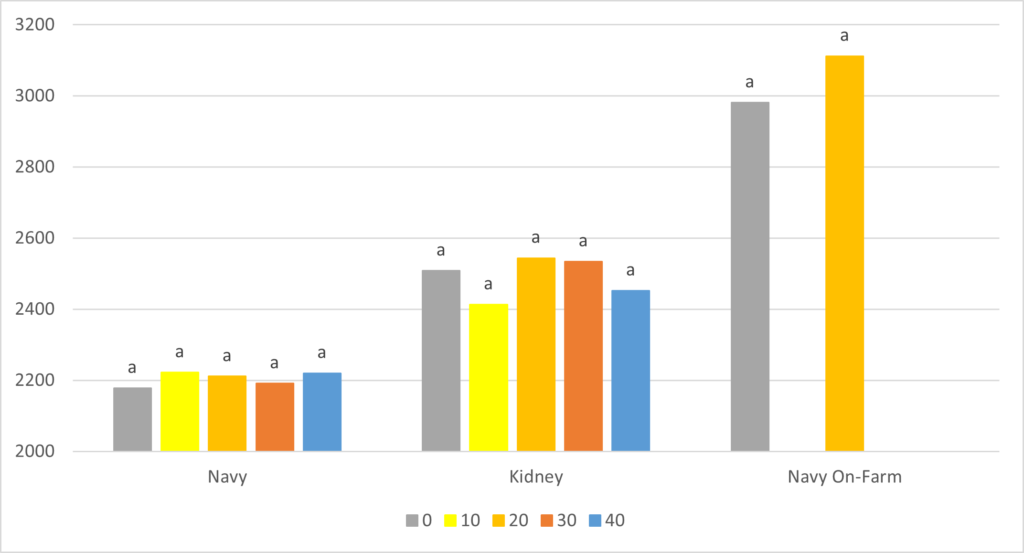A reduction in air pollution has dramatically reduced sulphur deposited into Ontario soils over the last 40 years. Sulphur is highly related to nitrogen in crop plants – sulphur is a key component of leaf chlorophyll and nitrogen fixation nodules. In addition, sulphur is a part of methionine and cysteine, two essential amino acids used to build plant protein. The purpose of this study was to determine the response of dry beans to potassium sulphate, a fertilizer containing readily available sulphur.
Small plot studies tested navy (cv. Mist, Morden 003, Line 37) and kidney (cv. Dynasty) beans at five sulphur rates (0, 10, 20, 30 and 40 kg S ha-1) at four trials at Ridgetown Campus and the Huron Research Station. Morden 003 and Line 37 are genetically similar, but Line 37 contains higher levels of methionine and cysteine. Separate on-farm small plot studies tested two sulphur fertilizer rates (0 and 20 kg S ha-1) on navy (12 sites) and otebo (1 site) beans. Measurements included the sulphur content of the soil, leaf tissue and harvested seed, plant growth and development, and crop yield.

There was no link between soil sulphur content and fertilizer rate for crop tissue sulphur, plant growth or crop yield measurements (data not shown). There was little response to five rates of sulphur fertilizer across four dry bean cultivars, including crop yield (Figure 1). Cysteine and methionine levels were similar for Morden 003 and Line 37 across five sulphur fertilizer rates. For the on-farm studies, adding 20 kg S ha-1 did not impact crop growth or yield, compared to zero sulphur fertilizer.